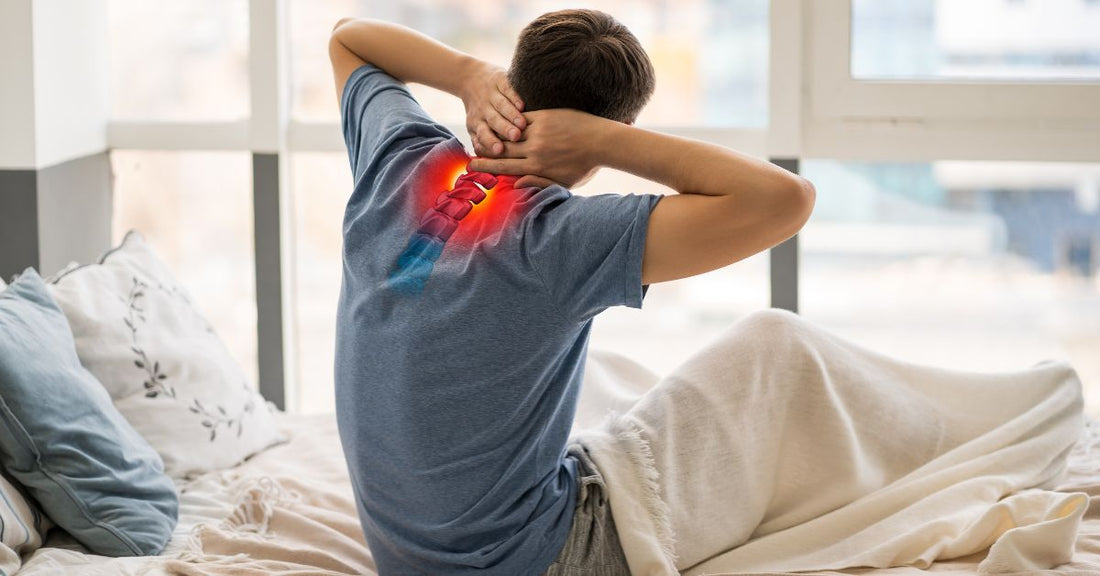
Osteoarthritis in the Back: Understanding Spinal Arthritis
Share
Osteoarthritis in the back, also known as spinal arthritis, affects the vertebrae, joints, and muscles of the spine. This condition can lead to significant pain and discomfort, particularly in the lower back and neck.
What is Osteoarthritis in the Back?

Osteoarthritis in the back occurs when the cartilage between the vertebrae and facet joints begins to break down due to wear and tear. This leads to inflammation, pain, and stiffness. Commonly affected areas include the lower back, cervical spine, and facet joints.
Common arthritis symptoms in the back include persistent pain, grinding sensations, and reduced flexibility, particularly when moving the spine or neck.
Causes of Osteoarthritis in the Back

The primary cause of osteoarthritis in the back is wear and tear on the spinal joints over time. Rheumatoid arthritis and other inflammatory conditions like psoriatic arthritis can also contribute to the development of back and neck pain.
Genetic factors may predispose individuals to develop degenerative joint disease in the spine. Additionally, lifestyle factors such as obesity and a sedentary lifestyle may increase the risk of developing osteoarthritis in the back.
Symptoms of Spinal Arthritis

- Back pain, especially in the lower back and neck
- Stiffness and loss of flexibility in the spine or neck, particularly with osteoarthritis
- Grinding sensations or pain when moving the spine, often related to facet joint arthritis
- Swelling and tenderness over the affected vertebrae
- Numbness or tingling in the arms or legs, in severe cases of nerve compression
- Headaches (especially with arthritis in the neck)
Treatment for Osteoarthritis in the Back

Managing osteoarthritis in the back primarily involves relieving pain and improving mobility. Non-surgical treatments include:
- Physical therapy to improve strength and flexibility in the back and neck
- Medications such as NSAIDs and corticosteroids to reduce inflammation and pain
- Injections into the affected joints for pain relief
- Lifestyle changes like weight management and posture correction to reduce stress on the spine
In severe cases, spinal surgery may be required to address nerve compression or stabilize the spine.
Is Osteoarthritis of the Back Curable?
Currently, there is no cure for osteoarthritis of the back. However, treatments can significantly reduce symptoms and improve quality of life. If you are experiencing back pain or suspect arthritis in your back, it is crucial to consult a healthcare professional for an accurate diagnosis and tailored treatment plan.
Preventing Osteoarthritis in the Back
While it may not be possible to completely prevent osteoarthritis, certain measures can help protect your spine:
- Regular exercise to strengthen back muscles and improve flexibility
- Maintaining a healthy weight to reduce strain on the spine
- Using ergonomic furniture and practicing good posture to avoid unnecessary stress on the joints
By combining healthy lifestyle habits with mindful posture and movement, you can support spinal health and lower your risk of developing back osteoarthritis.
The information provided in this article is for general informational purposes only. It is not intended as a substitute for professional medical advice, diagnosis, or treatment. Always seek the advice of your physician or another qualified healthcare provider with any questions you may have regarding a medical condition. Never disregard professional medical advice or delay in seeking it because of something you have read on this website. If you think you may have a medical emergency, call your doctor or emergency services immediately.
